Your sense of smell can predict your risk of dementia and Alzheimer’s disease.
A US study published in JAMA Neurology suggests that a decreased sense of smell may be an early warning sign of memory problems and even Alzheimer’s.
Researchers assessed the sense of smell of 1,430 cognitively normal men and women, with an average age of 79.5 years, at the start and every 15 months.
The smell test included six food-related and six non-food-related smells including banana, chocolate, cinnamon, gasoline, lemon, onion, paint thinner, pineapple, rose, soap, smoke and turpentine.
Over an average of 3.5 years of follow-up, 250 people developed mild cognitive impairment and 64 of them also developed dementia.
As their sense of smell decreased, so did their mental capabilities. Those who fared worst on the smell tests were 2.2 times more likely to develop memory problems.
"The findings suggest that doing a smell test may help identify elderly, mentally normal people who are likely to progress to develop memory problems or, if they have these problems, to progress to Alzheimer's dementia. Physicians need to recognise that this may be a possible screening tool that can be used in the clinic," the lead researcher suggested.

Coffee for long life
Here is good news for coffee drinkers—you may live longer. A Harvard study published in the journal Circulation finds that moderate coffee drinkers are less likely to die prematurely.
The study looked at the coffee drinking habits of 2,08,501 people every four years for about 30 years. About 32,000 participants died during the study period.
Overall, people who drank 1 to 5 cups of coffee a day had a lower risk of death from cardiovascular disease, neurological diseases such as Parkinson’s disease, type 2 diabetes and suicide. The benefits were seen with both caffeinated and decaffeinated coffee.
Nonsmokers had a greater benefit—a 15 per cent lower risk of death for those who drank 3 to 5 cups compared to non-coffee drinkers. Even heavy coffee drinkers (more than five cups a day) had a 12 per cent lower death risk than nondrinkers.
“This study provides further evidence that moderate consumption of coffee may confer health benefits in terms of reducing premature death due to several diseases. Bioactive compounds in coffee reduce insulin resistance and systematic inflammation. That could explain some of our findings,” the study author noted.
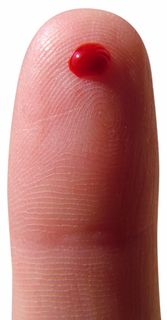
Results vary
Blood test is a common tool in the diagnosis of diseases. While drawing blood from the vein is the gold standard, fingerprick tests are widely available. But do they yield accurate results?
According to a US study published in the American Journal of Clinical Pathology, blood test results can vary from drop to drop in fingerprick tests.
To analyse the accuracy of fingerprick tests, the researchers drew six 20-microlitre droplets of blood in succession from 11 donors. All droplets were drawn from the same fingerprick.
They also drew 10 successive 10-microlitre droplets from seven additional donors to find out how many drops of blood will yield results that are similar to blood drawn from the veins.
The results were then compared to blood drawn from the donors’ veins.
The study showed that haemoglobin content, platelet count and white blood cell count varied significantly from drop to drop. In some cases, the haemoglobin concentration changed by more than two grams per decilitre in the span of two successive drops of blood.
"A growing number of clinically important tests are performed using fingerprick blood, and this is especially true in low-resource settings. It is important to understand how variations in fingerprick blood collection protocols can affect point-of-care test accuracy as well as how results might vary between different kinds of point-of-care tests that use fingerprick blood from the same patient," the lead researcher added.
"Our results show that people need to take care to administer fingerprick tests in a way that produces accurate results because accuracy in these tests is increasingly important for diagnosing conditions like anaemia, infections and sickle-cell anaemia, malaria, HIV and other diseases."

Suicide risk
Losing a parent as a child can increase a person’s risk of suicide, according to a Danish study published in the journal JAMA Psychiatry.
The study focused on data collected from 1968 to 2008 on 7.3 million people from Denmark, Sweden and Finland. The researchers compared 1,89,094 children, who lost a parent before they reached 18 years, to 1.89 million people who did not lose a parent in childhood. Losing a parent increased the risk of suicide for nearly 25 years.
About 0.14 per cent of people who lost a parent in childhood committed suicide compared to about 0.07 per cent of those who did not lose a parent during 40 years of follow-up. The risk of suicide was about 3.4 times higher in people whose parent committed suicide and twice higher if the death was from other causes.
Suicide risk was greatest among those who lost a parent before they reached the age of 6 and among boys who lost a parent.
"The consequences of parental death in childhood are far-reaching, and suicide risk trajectories may be influenced by early-life conditions. Future public health efforts should consider helping highly distressed children to cope with bereavement," the study concluded.
Did You Know
Pregnant women can enjoy their morning cup of coffee. Children born to women who consumed one or two cups of coffee per day while pregnant did not have lower IQ levels or more behaviour problems at ages 4 and 7.
American Journal of Epidemiology

Happy twosome
Does frequent sex make couples happier? According to a Canadian study published in the journal Social Psychological and Personality Science, couples who make love once a week are the happiest.
"Although more frequent sex is associated with greater happiness, this link was no longer significant at a frequency of more than once a week. Our findings suggest that it's important to maintain an intimate connection with your partner, but you don't need to have sex every day as long as you're maintaining that connection," the lead researcher noted.
The study focused on three different studies. All three had similar results. On an average, couples tend to have sex about once a week. While an active sexual life increased happiness, engaging in sex more than once a week did not make them happier.
"Our findings were consistent for men and women, younger and older people, and couples who had been married for a few years or decades.”
One of the studies also focused on happiness in relation to both money and sex. People who had sex less than once a month and people who had an income of $15,000-$25,000 were less happy compared to those who had sex once a week and those who had an income of $50,000-$75,000 per year, respectively. But the difference in happiness was larger for sex, suggesting that money does not give as much happiness as a content love life.
"People often think that more money and more sex equal more happiness, but this is only true up to a point."

Parasitic worms boost fertility
Parasitic worms can influence women’s fertility, according to a study based on Tsimane women of Bolivia, published in the journal Science.
Tsimane is an indigenous population of lowland Bolivia and the women are among the most fertile in the world. They have, on an average, 10 children.
The researchers analysed nine years of longitudinal data involving 986 women. “We found that different species of helminths—a family of parasitic intestinal worms—could have either positive or negative effects on the timing of a Tsimane woman’s next pregnancy,” said the lead author.
About 70 per cent of the women had a parasitic infection—either roundworm or hookworm.
Those infected with roundworm had earlier first births and shorter intervals between births. They also had as many as 12 children. In contrast, women infected with hookworm had delayed first-births and longer intervals between births. They had, on an average, seven children.
“These opposing effects are likely due to helminth infection affecting the immune system, which in turn affects the likelihood of conception.”
The findings could pave the way for new types of treatments for infertility.
Did You Know
Children who eat breakfast do better in school and are twice as likely to get above-average scores on assessment tests compared to kids who do not eat breakfast.
Public Health Nutrition
Lab-grown voice
Scientists at the University of Wisconsin in the US have successfully grown functional vocal cord tissue in the laboratory. The findings could eventually offer hope to people who have lost their vocal cords to cancer or other injuries.
Millions of people suffer from voice impairment and damage to the vocal cord mucosa, the specialised lining that vibrates as air moves over it to generate voice.
The researchers used vocal cord tissue from a cadaver and four patients who had their larynxes removed but not owing to cancer. They isolated, purified and grew the cells and then applied them to a 3-D scaffold made of collagen.
Within two weeks, the cells grew together to form layers that resembled a natural vocal cord lining with many of the same proteins and qualities as normal vocal cord cells.
Next, the tissue was transplanted on to one side of larynges that had been removed from cadaver dogs and warm, humidified air was blown through them. The tissue produced both a vibration and sound like the natural tissue on the other side.
The vocal cord tissue was also tested in mice engineered to have human immune responses, and there was no sign of rejection.
“These data suggest feasibility for transplant and survival in the larynx as well as for function, ultimately giving patients back their voices,” the study published in the journal Science Translational Medicine concluded.

Multilingual ability
Bilingual people have better cognitive outcomes after a stroke compared to people who speak only one language, according to a study from Nizam’s Institute of Medical Sciences in Hyderabad and the University of Edinburgh. The researchers analysed data from 608 stroke patients in Hyderabad. More than half the patients were bilingual, defined by researchers as speaking two or more languages.
Bilingual patients were twice as likely to have normal mental functions after a stroke compared to those who spoke only one language. About 40 per cent of bilingual stroke patients had normal mental function compared to 20 per cent of monolingual patients. They also did better on post-stroke tests measuring attention and ability to retrieve and organise information.
Monolinguals were more likely to have vascular dementia and mild cognitive impairment.
The benefits remained even after accounting for factors such as smoking, high blood pressure, diabetes and age. "The advantage of bilingualism is that it makes people switch from one language to another, so while they inhibit one language, they have to activate another to communicate," said lead study author Dr Suvarna Alladi, a neurology professor at NIMS.
Previous studies have shown that bilingualism may slow cognitive ageing and delay the onset of dementia. “Our results suggest that bilingualism leads to a better cognitive outcome after stroke, possibly by enhancing cognitive reserve,” the study concluded.
The research was funded by the Indian Council of Medical Research.
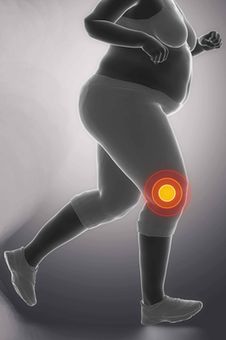
Weighing on the knees
Losing weight can slow the loss of knee cartilage in obese people and protect them from knee osteoarthritis, a degenerative joint disease.
Obesity is a major risk factor for osteoarthritis, which affects about 30 per cent of adults over the age of 60.
"Degenerative joint disease is a major cause of pain and disability in our population, and obesity is a significant risk factor," said the study's lead author. "Once cartilage is lost in osteoarthritis, the disease cannot be reversed."
The effect of weight loss on the progression of knee cartilage degeneration was studied in 506 overweight and obese patients who either had mild to moderate osteoarthritis or risk factors for the disease. They were divided into three groups: those who did not lose weight, those who lost a little weight, and those who lost more than 10 per cent of their body weight.
MRI scans were used to assess knee cartilage degeneration and knee osteoarthritis.
Losing weight had a protective effect against cartilage degeneration, but only if you lost a considerable amount.
"Cartilage degenerated a lot slower in the group that lost more than 10 per cent of their body weight, especially in the weight-bearing regions of the knee. However, those with 5 to 10 per cent weight loss had almost no difference in cartilage degeneration compared to those who didn't lose weight."
Significant weight loss can reduce your risk of osteoarthritis by slowing the loss of knee joint cartilage, concluded the study presented at the annual meeting of the Radiological Society of North America, in Chicago.
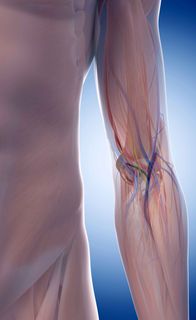
Arm artery safer
It is safer to access blocked vessels through an arm artery rather than a groin artery when performing angioplasties, concludes an Italian study in the Annals of Internal Medicine.
The researchers reviewed four international studies involving 17,133 patients. There were 27 per cent fewer deaths and 40 per cent fewer major bleeding events when angioplasties to open blocked blood vessels were performed via the arm artery compared to the groin artery.
Additionally, arm artery patients also had a 14 per cent reduced risk of major adverse coronary events.
But there was a downside. Since arm artery procedures use smaller vessels than the larger groin artery, the procedure is more challenging. It lasts slightly longer and the need to use an alternative access point to finish the procedure is higher.
"I was not surprised, as several previous trials and pooled analyses had already suggested that radial [arm] access reduces access site-related major bleeding and that this occurrence may ultimately reduce mortality. These pooled data, given such a clinically relevant mortality benefit, may represent the best incentive for centres to support the transition towards radial [arm] access," said the study author.
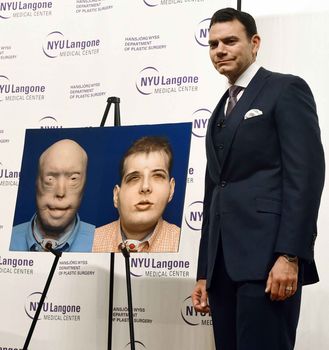 Hardison before (left) and after the face transplant | Getty Images
Hardison before (left) and after the face transplant | Getty Images
A new face
The world’s most extensive face transplant was successfully performed by a team of more than 100 physicians, nurses and technical and support staff led by Eduardo D. Rodriguez, at NYU Langone Medical Centre, New York.
Volunteer firefighter Patrick Hardison, 41, suffered disfiguring burns across his entire face, head, neck and upper torso when he entered a burning home looking for victims. He lost his eyelids, eyebrows, ears, lips, most of his nose and hair in the accident. Before the transplant, Hardison had undergone more than 70 surgeries elsewhere, but remained severely disfigured. Following a 26-hour surgery, Hardison now wears the face of 26-year-old Dave Rodebaugh, a BMX extreme bicycling enthusiast who died following a cycling accident.
The transplant involved two teams working in adjoining operating rooms. While one team removed Rodebaugh's face and other donated organs, the other team removed Hardison’s face and scalp burn.
Hardison received not only skin and muscle, ears and ear canals, but also selective bony structures including portions of the chin, cheeks and the entire nose.
The donor’s eyelids and the muscles that control blinking were also transplanted. Hardison was in danger of losing his sight and had been unable to perform independent daily tasks, such as driving. Blinking helps hydrate and clean the eyes to prevent infection and preserve vision.
Within the final hours of surgery, Hardison’s new face, especially his new lips and ears, “were robust with color, indicating circulation had been restored.” His hair and beard began to grow back immediately. By the third day, he was able to blink and within a week, he was sitting up in a chair. Now three months later, he is returning to the activities of daily life independently. Hardison still needs extensive rehabilitative therapy.
“I am deeply grateful to my donor and his family,” Hardison said in a statement. “Even though I did not know who they would be, I prayed for them every day, knowing the difficult decision they would have to make in order to help me. I hope they see in me the goodness of their decision."
Did You Know
Alcohol abuse increased risk of congestive heart failure by 70 per cent. The risk was more pronounced in younger adults (60 years or younger) and those without high blood pressure.
Study presented at the American Heart Association’s Scientific Sessions 2015
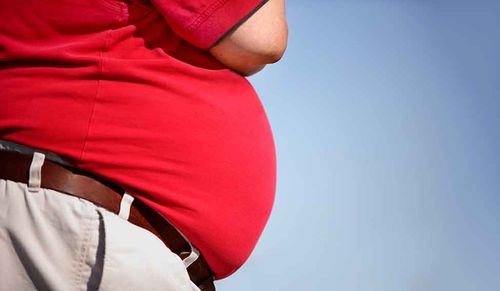
Deadly belly
Normal-weight people with excess fat around the middle have a greater risk of heart disease and death than obese people.
For the study published in the Annals of Internal Medicine, US researchers followed 15,184 adults, aged 18 or older, for an average of 14 years.
The researchers analysed their body mass index or BMI—weight to height ratio and also waist-to-hip ratios. Having fat around the belly is much worse than having fat around the hip. Having a waist circumference of 34.6 inches for women and 40.2 inches for men is considered as centrally-obese even for normal-weight people.
Normal-weight adults with central obesity had the worst long-term survival, with men faring worse than women.
A normal-weight man with excess belly fat had an 87 per cent increased risk of death during the study period compared to a normal-weight man without extra belly fat. He also had twice the risk of dying early compared to a man who is overweight or obese as per BMI only.
Normal-weight women with extra belly fat had a 48 per cent increased risk of death compared to normal-weight women without extra belly fat. The risk was 32 per cent higher when compared to obese or overweight women.
Contributor: SHYLA JOVITHA ABRAHAM






